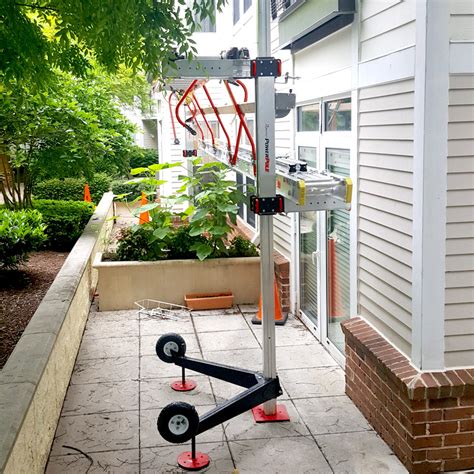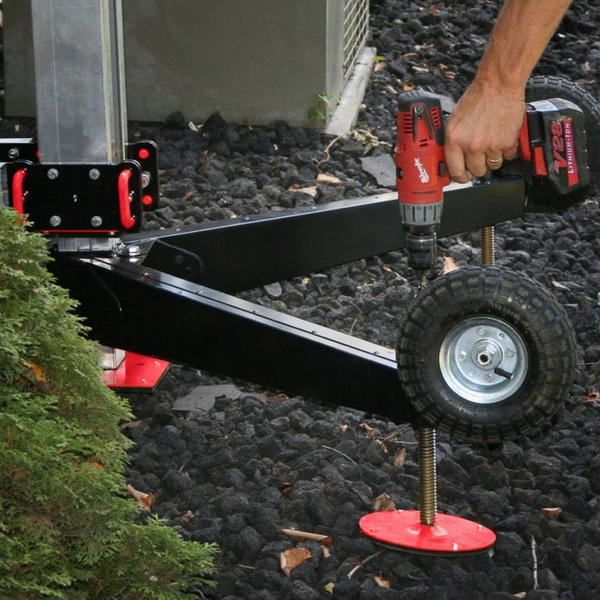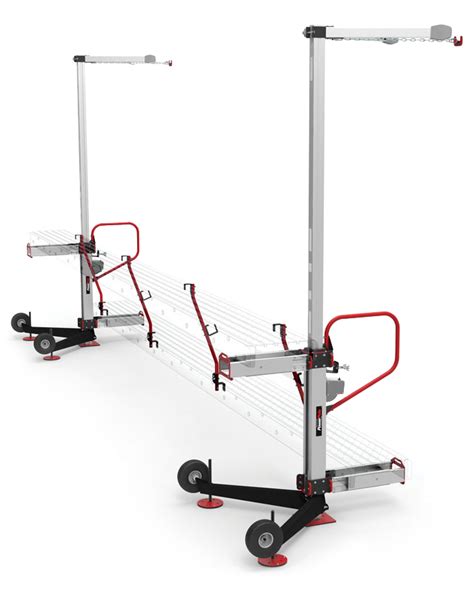Content Menu
● Introduction to Power Pole Scaffolding Systems
● Key Components of a Power Pole Scaffolding System
● Step-by-Step Guide to Setting Up a Power Pole Scaffolding System
>> 1. Gather Your Equipment
>> 2. Prepare the Site
>> 3. Secure the Poles
>> 4. Attach the Pump Jack Brackets
>> 5. Install the Work Platform
>> 6. Install Brace Supports
>> 7. Test the System
● Safety Measures When Using Power Pole Scaffolding Systems
● Common Applications of Power Pole Scaffolding Systems
● Maintenance Tips for Power Pole Scaffolding Systems
● Conclusion
● FAQ
>> 1. What is a power pole scaffolding system?
>> 2. How do I ensure my power pole scaffold is safe?
>> 3. What types of projects are best suited for power pole scaffolding?
>> 4. How often should I inspect my power pole scaffolding system?
>> 5. Can I use wooden poles in my power pole scaffolding system?
● Citations:
The power pole scaffolding system, often referred to as the pump jack system, is a popular choice in the construction industry due to its versatility and efficiency. This system allows workers to safely access heights for various tasks such as siding, painting, and roofing. Proper setup and usage are critical to ensuring safety and effectiveness on the job site. This comprehensive guide will walk you through the steps to properly set up and use a power pole scaffolding system, along with safety measures, maintenance tips, and common applications.

Introduction to Power Pole Scaffolding Systems
Power pole scaffolding systems consist of vertical poles (or jacks), a work platform, and adjustable brackets that allow users to raise or lower the platform as needed. This makes it an excellent choice for working at various heights without needing extensive scaffolding. The design is particularly beneficial for tasks that require frequent height adjustments.
Key Components of a Power Pole Scaffolding System
Understanding the components of a power pole scaffolding system is essential for proper setup and use:
1. Vertical Poles: These are usually made of durable materials like aluminum or steel. They provide the main support for the scaffold.
2. Pump Jack Brackets: These brackets attach to the vertical poles and allow for height adjustments of the work platform.
3. Work Platform: Typically made from planks or plywood, this is where workers stand while performing tasks.
4. Brace Supports: These are used to stabilize the poles and prevent lateral movement.
5. Safety Gear: Includes harnesses, guardrails, and toe boards to ensure worker safety.
Step-by-Step Guide to Setting Up a Power Pole Scaffolding System
Setting up a power pole scaffolding system involves several critical steps:
1. Gather Your Equipment
Before starting, ensure you have all necessary components:
- Pump jack poles (aluminum or wood)
- Pump jack brackets
- Work platform (planks)
- Brace supports
- Safety gear (harness, guardrails, fall protection)
2. Prepare the Site
- Choose a Stable Base: The ground where you set up your scaffold should be firm and level. If working on soft ground, consider using plywood or base plates for added stability.
- Clear the Area: Remove any debris or obstacles that may interfere with the setup or operation of the scaffold.
3. Secure the Poles
- Position the vertical poles at the correct distance apart based on your project needs and the length of the work platform.
- If using wooden poles, ensure they are straight and structurally sound. Aluminum poles should be free of dents or damage.
- Secure each pole firmly into the ground using base plates or by burying them according to manufacturer specifications.
4. Attach the Pump Jack Brackets
- Slide the pump jack brackets onto each pole at your desired height.
- Ensure they are properly engaged and functioning smoothly before proceeding.
5. Install the Work Platform
- Place the scaffolding planks between the brackets, ensuring they are level and secure.
- If using multiple planks, overlap them according to OSHA requirements.
- Attach guardrails and toe boards for additional safety.
6. Install Brace Supports
- Attach brace supports to each pole at specified intervals (usually every 4.6 meters) to prevent lateral movement.
- Ensure that braces are securely fastened to both the poles and the structure being worked on.
7. Test the System
- Slowly raise and lower the platform using the pump jack mechanism to ensure it operates smoothly.
- Check for any instability or shifting; adjust as necessary.
- Ensure all fasteners, braces, and connections are secure before starting work.

Safety Measures When Using Power Pole Scaffolding Systems
Safety should always be a top priority when using any scaffolding system:
- Personal Protective Equipment (PPE): Always wear appropriate PPE, including hard hats, safety glasses, gloves, and harnesses when working at heights.
- Regular Inspections: Inspect all components of the power pole scaffolding system before use. Look for signs of wear or damage.
- Load Capacity: Adhere strictly to load capacity limits specified by manufacturers—typically no more than 25 lbs per square foot.
- Two-Person Rule: Limit occupancy between supporting poles; generally no more than two workers should be present at any time.
- Proper Training: Ensure all workers are trained in scaffold assembly, use, and safety protocols.
Common Applications of Power Pole Scaffolding Systems
Power pole scaffolding systems are used in various construction scenarios:
- Siding Installation: Ideal for accessing high areas while installing siding materials safely.
- Painting Projects: Provides stable platforms for painters working at elevated heights.
- Roofing Tasks: Allows roofers to work safely while providing easy access to different sections of a roof.
- General Construction Work: Useful for any task requiring elevation access without extensive setup time.
Maintenance Tips for Power Pole Scaffolding Systems
To ensure longevity and safety in your power pole scaffolding system:
- Regular Cleaning: Clean components regularly to remove dirt, debris, and moisture that could lead to corrosion or damage.
- Inspect Components: Regularly check all parts for wear or damage—especially moving parts like brackets and jacks.
- Store Properly: When not in use, store components in a dry place away from direct sunlight to prevent deterioration.
Conclusion
The power pole scaffolding system is an invaluable tool in construction projects that require safe access at varying heights. By following proper setup procedures, adhering to safety measures, and maintaining equipment diligently, construction professionals can maximize efficiency while minimizing risks on job sites. The versatility of this system makes it suitable for numerous applications across different sectors within construction.

FAQ
1. What is a power pole scaffolding system?
A power pole scaffolding system consists of vertical poles with adjustable brackets that allow users to raise or lower a work platform as needed for tasks at various heights.
2. How do I ensure my power pole scaffold is safe?
Ensure proper setup by securing poles firmly into stable ground, using brace supports correctly, adhering to load limits, and wearing appropriate PPE during use.
3. What types of projects are best suited for power pole scaffolding?
Power pole scaffolding is ideal for siding installation, painting projects, roofing tasks, and any general construction work that requires elevation access.
4. How often should I inspect my power pole scaffolding system?
Inspect your power pole scaffolding system before each use for signs of wear or damage—especially focusing on moving parts like brackets and jacks.
5. Can I use wooden poles in my power pole scaffolding system?
While wooden poles can be used if they are structurally sound, metal poles are generally preferred due to their durability and resistance to weather-related issues.
Citations:
[1] https://pdf.lowes.com/productdocuments/678382fc-ebff-4210-9467-33700c3f5bb9/61751388.pdf
[2] https://search-ohs-laws.alberta.ca/legislation/occupational-health-and-safety-code/part-23-scaffolds-and-temporary-work-platforms/
[3] https://falconladder.com/content/PUMPJACK/Pump-Jack-System-Instructions.pdf
[4] https://ppwg.ccohs.ca/topic/scaffolding/
[5] https://www.youtube.com/watch?v=BUAO-ZQYZ_k
[6] https://cdn.dal.ca/content/dam/dalhousie/pdf/dept/facilities/FM%20Safety/fallprotection/Safe%20Job%20Procedure%20for%20Erecting%20Pump%20Jack%20Scaffolding%20June%202014.pdf
[7] https://scaffoldingrentalandsales.com/blog/-how-to-properly-set-up-and-dismantle-a-pump-jack-system/
[8] https://www.worksafebc.com/en/law-policy/occupational-health-safety/searchable-ohs-regulation/ohs-regulation/part-13-ladders-scaffolds-and-temporary-work-platforms






















